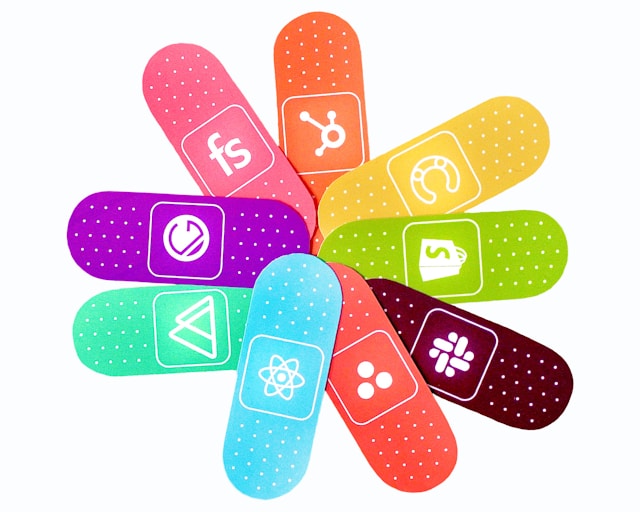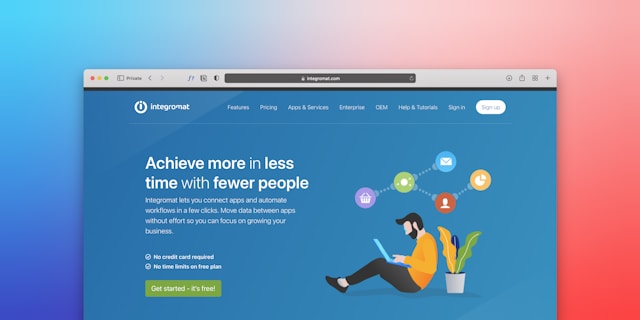
Pay-Per-Click (PPC) Advertising for SaaS Companies
SaaS companies face a unique challenge in the world of paid marketing: they're not selling a physical product, but an ongoing service that requires trust, understanding, and commitment from the customer. Therefore, paid advertising for SaaS must be structured differently from standard campaigns—with emphasis on understanding the target audience, building a smart marketing funnel, and precisely measuring customer acquisition cost (CAC).
If you're asking yourself how to properly build a PPC campaign for SaaS, the short answer is: define your target audiences correctly, adapt your message and offer to each stage of the customer journey, measure every step in the conversion path, and persist with data-driven optimisation.
Throughout this article, we'll dive deeply into each of these stages, review essential tactics, and answer the truly important questions—how to build a campaign that brings quality leads, generates sales, and supports genuine business growth.
Understanding the Unique Challenges in Paid Advertising for SaaS
Paid marketing for SaaS (Software as a Service) products doesn't operate according to the same rules as marketing for traditional businesses. Unlike a one-time product, here we're dealing with an ongoing service—which means the sale requires more time, more stages, and a more intimate understanding of the customer.
Before we touch on PPC strategies for SaaS, we want to present the unique challenges we face:
Long Sales Funnel and Slow Decision-Making
SaaS customers don't always make immediate purchases. Often, they compare solutions, read reviews, consult with colleagues and friends—and only then submit their details or make a purchase. Therefore, paid promotion for SaaS must accompany the customer over time and offer value at every stage of the journey, not just a one-time "buy now" offer.
Competition for Keywords is Expensive and Challenging
In the SaaS field, the most competitive keywords can cost tens of pounds per click. This means each click must be precise—both in terms of target audience and the landing page that receives the visitor. Every small mistake is costly.
Without Smart Measurement, Progress is Impossible
Success in a SaaS campaign isn't measured solely by the number of clicks or leads. What truly matters is the customer acquisition cost (CAC) versus the lifetime value of the customer (LTV).
Only when there's control and tracking of these figures can you know if the campaign is worthwhile. In other words: paid promotion for SaaS must include smart CRM integration, ongoing data analysis, and remarketing based on different stages of the sales path.

How to Define Goals and Metrics for a SaaS Campaign?
One of the fundamental differences between a regular paid campaign and a SaaS campaign is the question of what constitutes success. The number of clicks or leads is just the beginning because the real goal is customers who pay over time.
The first thing we need to do is align our goal with the stage the business is in. A new startup will measure success by exposure and initial interest checks (such as webinar registration or guide downloads), whereas a company at a more advanced stage will focus on generating quality leads—people who genuinely leave their details and join a pilot or trial period.
Each stage in the customer journey has different metrics:
- Awareness Stage: The goal here is to be exposed to the relevant audience. Metrics will be the number of ad views, click-through rate (CTR), and initial engagement level.
- Interest Stage: At this stage, we want to convert viewers into leads. Key metrics: cost per lead (CPL), lead quality, and the percentage of leads that continue to the next stages.
- Consideration Stage: Here we check if the customer is ready to try the product. Metrics: trial entry rate, demo requests, and engagement with advanced content.
- Purchase Stage: This is the moment when the lead becomes a paying customer. The critical metric is customer acquisition cost (CAC), and it should be checked against the lifetime value of the customer (LTV) to assess profitability.
It's important to remember that if the customer acquisition cost (CAC) is too high in relation to the profit you derive from them over time (LTV), the campaign isn't worthwhile. A common rule of thumb is that the LTV:CAC ratio should be at least 3:1. Meaning—if a customer is worth £3,000 to the business, it's recommended to invest up to £1,000 in acquiring them.
How to Define Audiences and Correct Messages in Paid Promotion for SaaS?
The next step in building a successful SaaS campaign is understanding that generic messages don't work here. To attract real customers—especially in B2B models—you need to refine not just the audience, but also how you approach them.
A precise definition of the target audience is the foundation. In paid promotion for SaaS, it's important to distinguish between different roles within the organisation (decision-maker, end-user, technical manager) and adapt the message accordingly. For example: an ad addressing an IT manager will emphasise reliability and performance, while an ad for a marketing manager will focus on ease of use and integration with existing tools.
Beyond that, effective paid SaaS marketing is built in stages: awareness, interest, consideration, purchase. Each stage requires a different message. At the beginning, the message might be: "Discover a new solution for managing projects with remote teams". In more advanced stages, we'll offer a free trial or detailed technical guide—according to the customer's readiness.
Platforms like Google Ads and LinkedIn Ads allow us to build smart audiences based on organisational roles, industry, company size, and even pages they've visited on our website. Proper audience management—combined with tracking website actions (CRO)—enables building campaigns that bring quality leads rather than wasting the budget on random audiences.

Account-Based Marketing (ABM) for Paid Campaigns in the SaaS Field
Beyond audience refinement by roles and interests, an especially advanced strategy for SaaS paid campaigns—mainly in B2B—is using the Account-Based Marketing (ABM) approach.
Instead of trying to reach everyone in the industry, ABM allows focusing on specific companies pre-defined as particularly high-quality potential customers.
How does this work in practice?
- Build a list of target accounts—companies that constitute your "dream customers" or those especially suited for the solution you offer.
- Upload the list to advanced advertising platforms—where LinkedIn leads the field, but Taboola, Outbrain, and dedicated ABM platforms also support this.
- Perform additional filtering by relevant roles, for example: direct approach to IT managers or marketing VPs in the target companies.
A significant advantage of this method is that there's no need for prior consent from the targeted companies, and the focused advertising saves budgets and increases the chance of generating truly quality inquiries.
How to Build a First Paid Campaign for SaaS?
Building a first PPC campaign for a SaaS company is a process that requires precise planning—not just in terms of the platform, but also in terms of the message, the offer, defining the target audience, and tracking results.
Here are the main stages for a smart and proper start:
- Start with One Clear Goal
Instead of trying to "catch everything", it's best to start with one goal—for example: registration for a free trial, guide download, or demo request. A clear goal allows measuring outcomes and understanding what works. - Choose a Platform According to Audience
For B2B SaaS, it's recommended to start
with Google Ads (because the customer is searching for you) or LinkedIn Ads (if you know who to approach). For B2C SaaS, it's worth considering Meta Ads or YouTube as well. - Formulate a Sharp and Precise Offer
In the first ad, it's important to emphasise the clearest benefit for the customer. Not "smart cloud solution", but for example: "Easily manage remote teams—start a 14-day free trial." - Build a Matching Landing Page
The ad doesn't stand alone. For the campaign to work—the landing page needs to continue the same message, without distracting the user. It's important to include a clear call to action, social proof, and focused benefits. - Install Tracking and Measure
Each Step Before activating the campaign—ensure all tracking is working: Google Analytics, conversion code, form tracking, and even call recording. This way, you'll know what really happened after the user clicked.

How to Measure CAC and Understand Profitability in a SaaS Campaign?
With SaaS products, it's not enough to check how many leads were received or how many clicks were registered. To know if a paid campaign is truly worthwhile, you need to measure the customer acquisition cost (CAC) and compare it to the value the customer generates over time (LTV).
How to calculate CAC?
The formula is simple:
CAC = Total marketing and sales investment ÷ Number of new customers acquired in a given period.
For example: If you spent £50,000 on campaigns, and as a result, 25 customers were acquired—your CAC is £2,000 per customer.
CAC by itself doesn't say much. The real question is how much the customer is worth over time (LTV). If the LTV of an average customer is £9,000, and the CAC is £2,000—you're in good shape (a ratio of 4.5:1).
On the other hand, if the CAC is too high relative to the LTV—the campaign isn't worthwhile and needs to be optimised.
How to improve CAC in paid promotion?
- Target more precise audiences to reduce wasting budget on irrelevant leads.
- Improve landing page quality to increase conversion rates.
- Maintain close tracking of the data and perform ongoing optimisation for each stage in the funnel.
- Extend customer value through upgrades, annual plans, and follow-up sales.
Competitor Analysis – Key to Success in a Competitive SaaS Market
In the SaaS market, where every niche can be highly competitive, in-depth competitor analysis is a critical tool for building a smart and winning paid promotion strategy.
Understanding what competitors offer, how they approach their audience, and what their advantages and disadvantages are—allows us to sharpen our marketing proposition and build campaigns that speak more precisely to the potential customer.
Central tools for competitor analysis in PPC campaigns:
- Auction Insights in Google and Microsoft Ads—you can see who is competing with you for the same keywords. It's important to remember that competitors for clicks aren't always identical to your direct business competitors.
- Ad Libraries—such as Google Ad Transparency Center, Meta's Ad Library, and LinkedIn's Library, through which you can see what ads competitors are running, which calls to action (CTAs) they choose, and which messages they emphasise.
How to utilise the information correctly?
- Identify target audiences—understand which organisational roles competitors are addressing (IT managers, marketing VPs, etc.).
- Analyse marketing offers—are competitors offering attractive offers or special incentives?
- Check conversion processes—register yourselves on competitors' sites, check the user experience, the registration process, and whether remarketing campaigns or email sends are activated for you.
- Identify weaknesses—if you've identified price increases, problematic customer service, or negative reviews, it's worth emphasising your advantages in campaigns.
In-depth knowledge about competitors should serve not only the campaign team but also content writers, landing page designers, and automation managers—thus creating a smarter and more precise customer journey than that of the competitors.
How to Perform Smart Remarketing for a SaaS Campaign?
In paid promotion for SaaS, remarketing isn't a luxury—it's a necessity. The long sales cycle and high comparison capability of customers require us to remain in their awareness, accompany the customer on their journey, and return to them with a suitable offer at each stage.
Instead of remarketing to everyone who visited your site, it's better to divide remarketing audiences by level of engagement:
- Visitors who only visited the home page will receive a general message ("Discover a smart SaaS solution").
- Visitors who visited the pricing page or registered for a webinar will receive a more advanced message ("Ready to start? Register for a free trial").
In smart remarketing, you don't display the same ad over and over. A potential customer who didn't leave details the first time might need to see proof of success (a case study), not just an offer for a free trial. It's important to adapt the content to what the customer has already seen and where they are in the buying journey.
Building a Winning PPC Campaign for SaaS Begins with Deep Understanding
Paid promotion for SaaS requires different thinking: understanding the long sales cycle, defining correct goals and metrics, building smart audiences and adapted messages, measuring customer acquisition cost precisely, and persisting with continuous improvement.
Whether you're just starting out or looking to improve an existing campaign, it's important to remember: in SaaS promotion, there's no room for small mistakes. Every click needs to be built correctly, every landing page needs to be focused, and every pound needs to work for you.
Want to know how you can improve your campaigns and increase growth rate? We at Alt would be happy to help.
Frequently Asked Questions About SaaS Promotion
How to build an effective PPC campaign for a SaaS company?
To build an effective PPC campaign for a SaaS company, define goals adapted to customer journey stages, choose a precise target audience, adapt the message to each stage, measure customer acquisition cost (CAC), and perform constant data-driven optimisation.
What's special about a PPC campaign for a SaaS company compared to a regular campaign?
A SaaS campaign requires focus on ongoing sales rather than one-time purchases, adaptation to each stage of the customer journey, and precise tracking of profitability metrics like CAC and LTV.
How to calculate CAC in SaaS promotion?
Customer acquisition cost (CAC) is calculated by dividing the total investment in marketing and sales by the number of new customers acquired. For example: if you invested £50,000 and acquired 25 customers—the CAC is £2,000 per customer.
How do I know if my PPC campaign is truly profitable?
Profitability in a SaaS campaign is measured by the ratio of customer acquisition cost (CAC) to lifetime value (LTV). A rule of thumb is a ratio of at least 3:1 in favour of LTV.
What's important to know about remarketing in paid campaigns for SaaS?
In campaigns for SaaS, remarketing should be adapted to the visitor's level of engagement. Segment the audience by website behaviour and adapt the message to the stage in the customer journey to improve conversion chances.
How long should I continue a remarketing campaign for customers who didn't convert?
Generally, it's recommended to continue a remarketing campaign for potential customers between 30 and 90 days, depending on the length of the purchase cycle for your SaaS product.
Asaf Shimoni
Founder of Alt Digital Marketing, with nearly 20 years of experience in digital marketing. An expert in SEO and paid campaigns, helping tech companies, eCommerce, and B2B businesses achieve steady growth through tailored marketing strategies.

REQUEST A WEBSITE CHECK
See how your website could be performing better.

